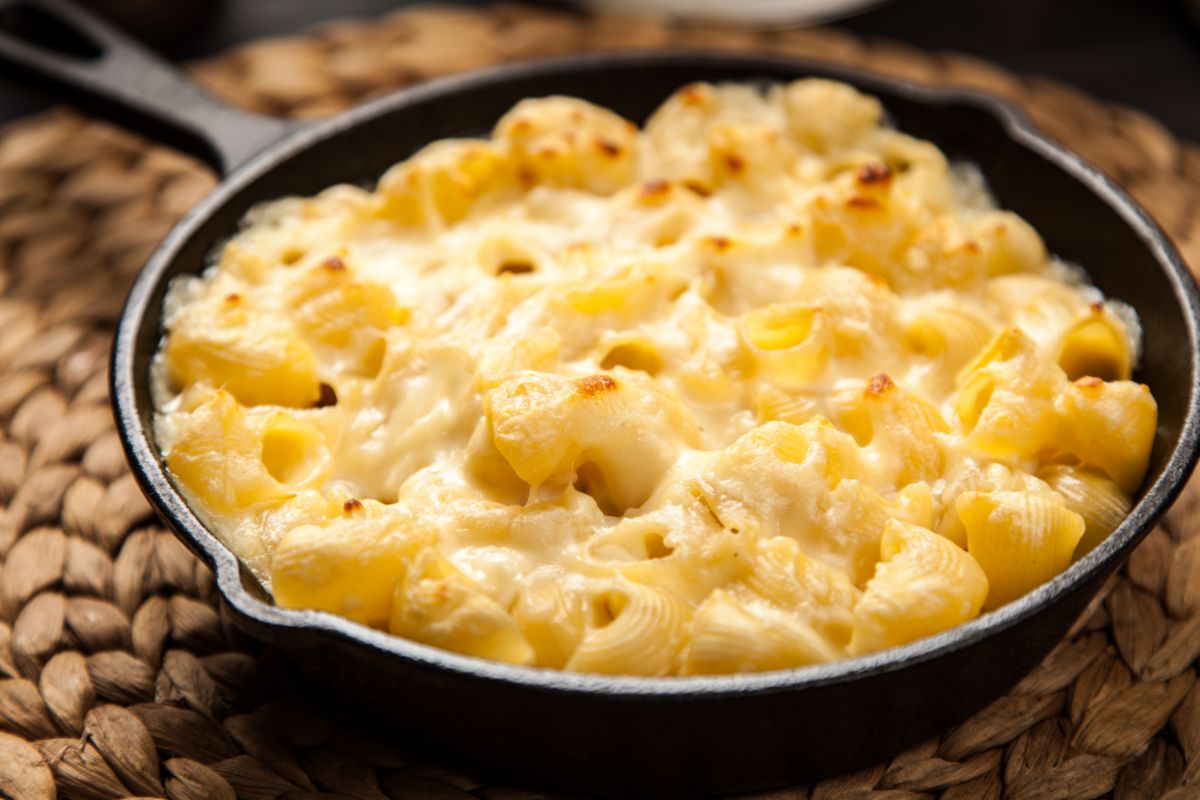When you have a good bowl of mac and cheese there is hardly anything that compares. But there will be times when you go to make mac and cheese and it just won’t come out right.

One such time is when the mac and cheese has gone a bit grainy, and it can be a bit confusing as to why this has happened.
But fear not! We are here to help! If you have made some mac and cheese and it’s gone grainy, we’re going to go over everything you need to know to fix it! So let’s get started!
How To Easily Fix Grainy Mac And Cheese?
Fixing mac and cheese when it’s grainy can be a bit of a pain, but it’s definitely not impossible! Whenever you are making a batch, it is always important to keep an eye on it, that way you can catch it going bad before it becomes a problem.
If you notice your mac and cheese has started to go grainy, follow these steps to fix it:
- Remove the pan from the heat straight away.
- Allow your mac and cheese to get to room temperature.
- Now, add a teaspoon of vinegar or lemon juice to the pan. You can also use high-fat cream instead!
This should help reduce the graininess in your mac and cheese and you should still be able to salvage the batch. If you are reheating leftover mac and cheese, there is still a chance it could go grainy, and if that happens, follow these steps instead:
- Before reheating, allow the batch to reach room temperature.
- Now, warm up some milk. Make sure it is high in fat!
- Next, stir it into the pasta, but make sure not to over-stir it.
- Finally, reheat it.
It can be really annoying when mac and cheese go grainy, but if you use these methods, it means you don’t have to start again or throw any food away!
Why Mac And Cheese Might Be Grainy?
Now you know how to fix grainy mac and cheese, it’s in your best interest to learn why mac and cheese go grainy. By understanding what makes it happen, it can help to prevent it.
There are actually quite a few reasons why mac and cheese might go grainy, especially during the prepping and cooking phase, so let’s take a look at the reasons why now!
Too Much Heat
Sometimes, the problem can be caused by something as simple as too much heat! The reason heat can be an issue is that sauces that are made primarily of dairy don’t really get along with high temperatures.
The sauce can go grain and it can burn, and if you are using milk in the sauce, it can even evaporate a bit or even curdle.
It’s always important to keep an eye on your mac and cheese, or any dish that is made with a dairy-based sauce. You can’t really leave it unattended because if you do, it’s likely to spoil.
Not Enough Fat
Another reason why mac and cheese can go grainy is actually because of the type of milk you are using. If you are using anything low-fat, then you have a higher chance of making a grainy batch.
Milk that has a lower fat content has a tendency to curdle a lot faster than milk with a higher fat content.
This doesn’t mean that it will happen every single time you use low-fat milk, but it does mean you have to be a little more vigilant. When you can, always use milk with a higher fat content to avoid this.
Too Much Acid
When you are making mac and cheese at home, most recipes will call for very acidic ingredients such as vinegar or even lemon juice. But as much as they are helpful to the creation of the dish, they can also cause destruction to it too.
Ingredients with high acid volumes can actually cause your milk to curdle. These types of ingredients are actually used to purposefully curdle milk to make cheese, so it makes sense really!
If you are going to use an acidic ingredient to make mac and cheese, it’s in your best interest to only use one and to keep its usage to a minimum. You will have to vigilantly keep an eye on your batch as well!
Conclusion
No one likes grainy mac and cheese, but if you notice that your batch has gone grainy, there is still a chance you can save it! As long as you keep an eye on your batch and understand how the ingredients work together, you should be able to stop it from happening!
Use the directions we have provided to save your mac and cheese and make sure you understand why the batch has gone grainy!
- How To Reheat A Cheesesteak - November 5, 2023
- What Are Three Must Have Kitchen Knives? - September 22, 2023
- How To Protect Edges Of Pie Crust - June 15, 2023








